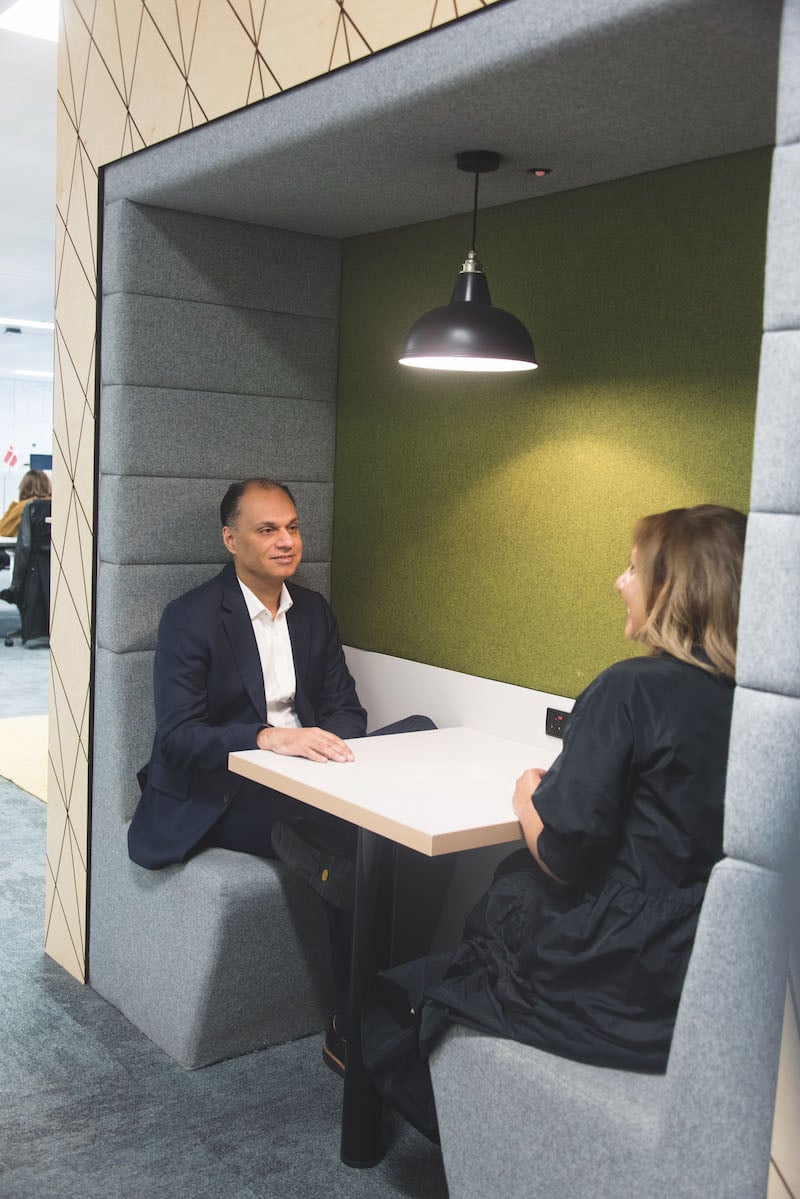Despite a rather late arrival in Europe, Uber Eats has wasted no time in becoming one of the continent’s favourite food delivery platforms. After launching in Paris in 2016, the app is now available in more than 250 cities across 19 countries, and partners with over 60,000 restaurants.

“While there’s no doubt the double-digit growth of the category has played an important role in our success, the insatiable demand for our product has largely been driven by a relentless focus on building technology to meet the needs of our customers: users, restaurants and couriers,” explains Raj Beri, Head of Uber Eats – Asia Pacific, Europe, Middle East and Africa.
And, while he is more than aware that the company has come a long way in a short time, he adds that it is only scratching the surface of the food delivery market potential, a figure he estimates to be worth around US$795 billion (€722 billion).
“We are very excited about the future and we strongly believe Europe could become the biggest region for Uber Eats globally,” he enthuses. The CEO Magazine speaks to Raj to learn more.
Can you explain the criteria you use when deciding in what city or town in Europe to launch?
When we first started out, we typically launched in cities with an existing rides business – historically major metropolitan cities. But over the past 12 to 18 months, we’ve started expanding Uber Eats to cities and countries where we don’t currently operate ridesharing.

In fact, today we are present in more than 80 cities across Europe where we don’t have a ride business and our users’ first experience of Uber is via Uber Eats. Globally, more than 50% of our Uber Eats users are new to Uber. This is a really interesting opportunity for Uber more generally as we look to grow the number of people who use multiple products on our platform.
“Today we are present in more than 80 cities across Europe where we don’t have a ride business and our users’ first experience of Uber is via Uber Eats.”
What are the areas of the EMEA food delivery market where you spot the most opportunity?
One of our top priorities right now is investing in more ways to help the restaurant industry grow and innovate, while vastly enhancing selection for users. This includes building new technology to help the small- and medium-sized businesses with whom we partner. An initiative we recently launched in nearly a dozen European countries is the opportunity for restaurants to serve their customers via the Uber Eats app while using their own couriers for delivery. The response so far has been positive.
Likewise, we recently launched a pick-up service to allow restaurants to offer their customers the chance to order on the app, skip the queues and collect their order instore. We’re also experimenting with different virtual restaurant models – essentially a restaurant that only exists in the Uber Eats app – by taking a data-driven approach to food delivery.
We’re currently partnering with thousands of restaurants around Europe to help them identify ‘selection gaps’ – where there’s a high demand for a particular cuisine or meal item, but low supply – to launch a virtual concept from their existing restaurant or from a shared kitchen space. To date, we’ve helped launch 5,000 virtual restaurants, with average sales increasing by more than 50%.
We’re also partnering with household names such as McDonald’s and Starbucks to bring people’s favourite treats to their doors. To help food delivery become a seamless part of their operations, we’re investing in point of sale integration technology, which is an incredibly important thing to get right when collaborating with businesses operating at their scale.

What are some of your other areas of focus over the next 12–18 months?
We want Uber to be the operating system for everyday life: the go-to app for whatever people need. While Uber started with on-demand rides, we’ve grown to offer access to everything from food delivery to electric bikes and scooters. In October 2019, we debuted the next generation of the Uber app: a new way to discover, access and experience the growing number of services available through our platform.
Users in hundreds of cities across Europe can now see our Rides and Eats services side-by-side. Not only is this an enormous growth opportunity for us, with only 15 million out of 100 million monthly active platform customers using Uber Eats currently, but also for our restaurant partners. We’re the only food delivery app in the world who can provide access to new customers at that scale.
As part of this vision to be a one-stop app for city life, we think there’s huge potential in convenience retailing and grocery. We want to offer users the same convenience they’ve come to expect when ordering food from a restaurant or in other food consumption moments.
This means being able to order a coffee from Starbucks and having it delivered to your Uber curbside, quick and convenient grocery delivery anytime, anywhere, or requesting prepared foods from your local store to arrive when you get back from a long day at work. From the moment you wake up, we want Uber Eats to be the app you choose for all food occasions.
That’s why we recently announced a partnership with 1,600 Costcutter stores in the UK to provide our users with access to everyday staples such as bread and milk. We’re also super excited to be partnering with the team at Cornershop to scale their vision and work with them to bring grocery delivery to millions of consumers on the Uber platform.
Perfecting the recipe
Looking to the future, Raj explains that Uber Eats will continue to invest in adding products and services that enhance the user experience. “From groceries and city experiences to payment options, rewards programs and subscriptions, we strongly believe our vision to become the operating system for everyday life sets us apart from the crowd.”
As a global company, how do you manage to serve your restaurants on a local level?
One of our company values is to ‘build globally and live locally’. This means harnessing the power and scale of our global technology to deeply connect with the cities, communities and restaurants that we serve, every day.
In practice, this is about creating trusted relationships with restaurants big and small, having a deep understanding of their business – both the challenges and the opportunities – and building technology that ultimately helps them serve more customers and grow their business.
We spend a lot of time meeting with restaurant owners to better understand how we can help support them and what improvements we can make to our service to better meet their needs. This includes things like the ability to use their own delivery staff, to access data and insights that make operations more efficient or help identify new sales opportunities, to partner on co-branded marketing campaigns, point of sale integration and, importantly, to offer access to a delivery network that gives restaurants confidence their food will arrive fresh, hot and on time to their customers.
Ultimately, we want to provide restaurants with everything they need to make food delivery a successful and core part of their business, so they can focus on what they do best – serving great-tasting food.


